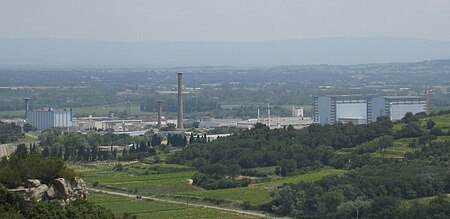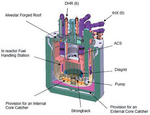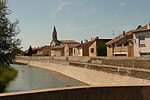Phénix

Phénix (French for phoenix) was a small-scale (gross 264/net 233 MWe) prototype fast breeder reactor, located at the Marcoule nuclear site, near Orange, France. It was a pool-type liquid-metal fast breeder reactor cooled with liquid sodium. It generated 590 MW of thermal power, and had a breeding ratio of 1.16 (16% more plutonium produced than consumed), but normally had to be stopped for refueling operations every two months. Phénix continued operating after the closure of the subsequent full-scale prototype Superphénix in 1997. After 2004, its main use was investigation of transmutation of nuclear waste while also generating some electricity. Phénix was shut down in 2009.The decommissioning project started in 2005. Between 2009 and 2011, the non-nuclear equipment and turbine hall were dismantled. The decommissioning license was expected for 2015. Finalising of the decommissioning process is expected between 2031 and 2043.
Excerpt from the Wikipedia article Phénix (License: CC BY-SA 3.0, Authors, Images).Phénix
D 138A, Nîmes
Geographical coordinates (GPS) Address Nearby Places Show on map
Geographical coordinates (GPS)
| Latitude | Longitude |
|---|---|
| N 44.143333333333 ° | E 4.7116666666667 ° |
Address
D 138A
30200 Nîmes
Occitania, France
Open on Google Maps











